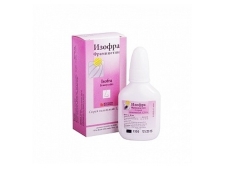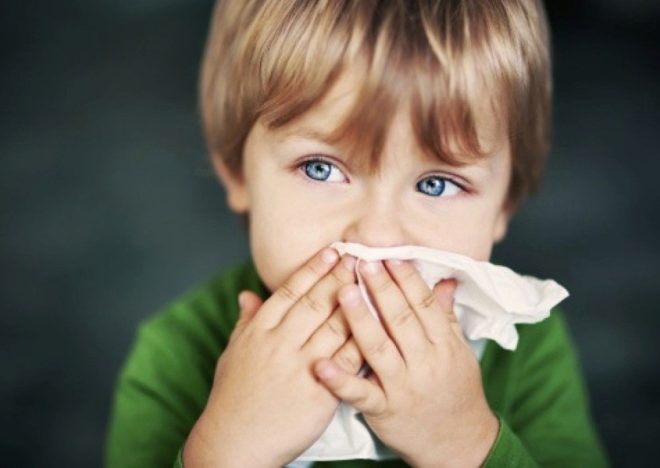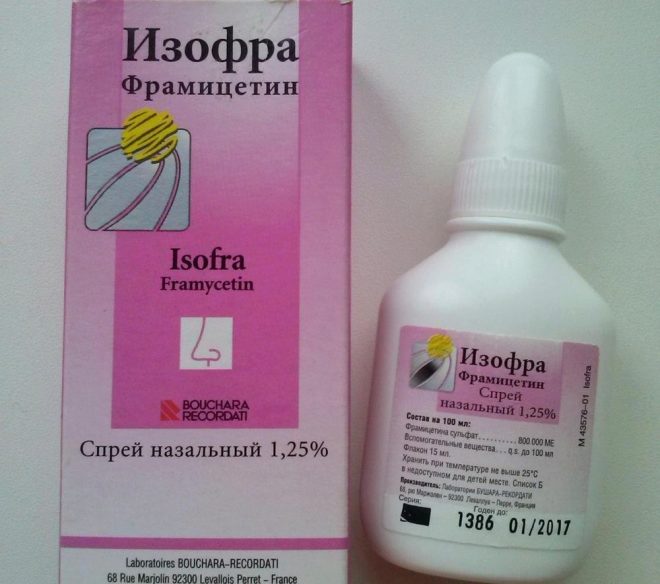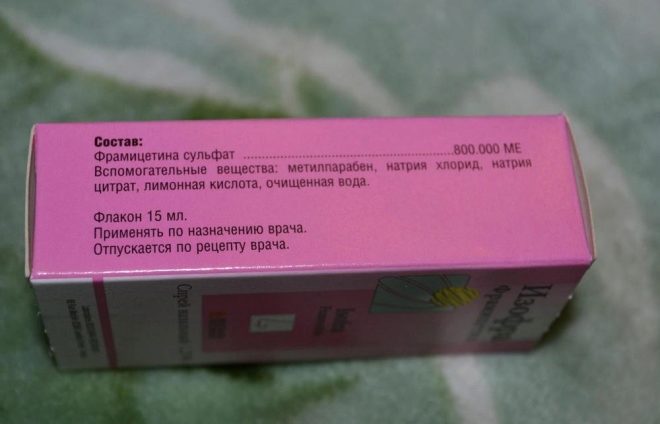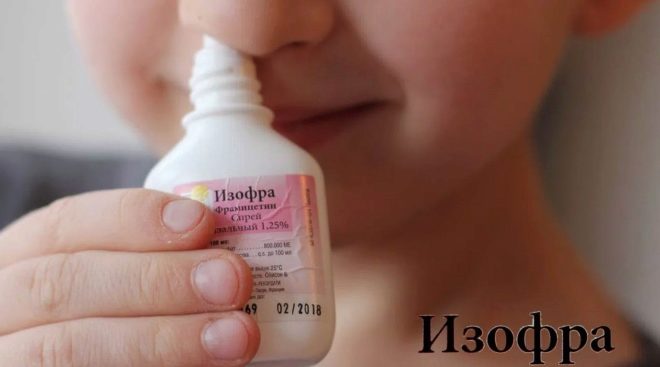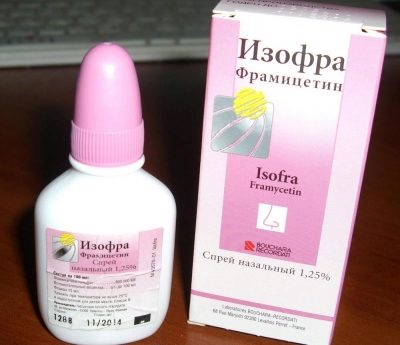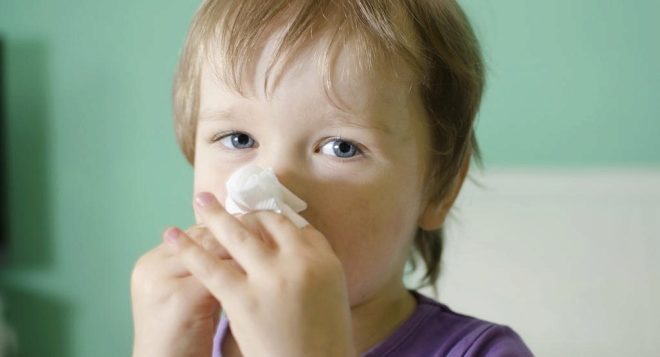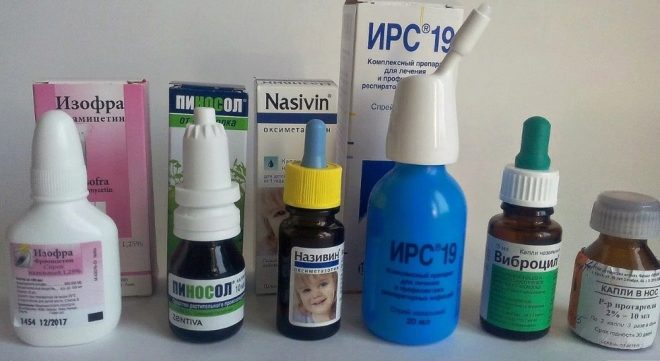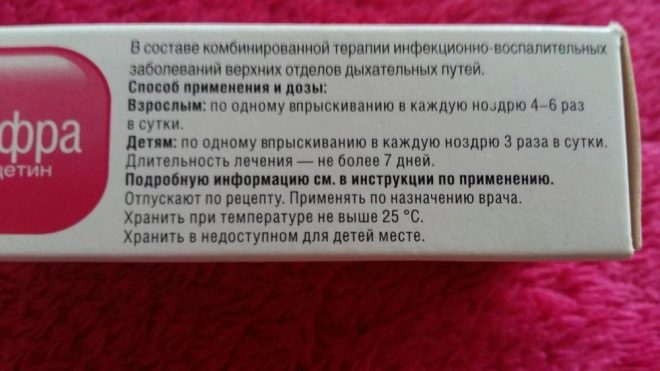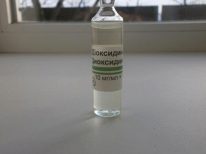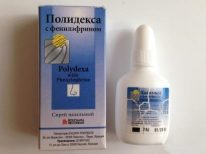Isofra for children: instructions for use
During the season of influenza and other acute respiratory viral infections, upper airways are the entrance gate for pathogens. It is the nasal mucosa and paranasal sinuses that are the first to be attacked by viruses and often remain on it, causing inflammation.
Often they are joined by harmful bacteria, because of which there is a purulent rhinitis, sinusitis, otitis media and other diseases. In such situations, local antibiotic drugs, which include Isofra, are in demand. Is this medicine allowed for children and how to use it correctly?
Release form
The drug is available in the form of a nasal spray with an active ingredient concentration of 1.25%. Inside a single plastic bottle Isofra is 15 milliliters of clear liquid. The bottle has a screw cap made of polyethylene. It is sold in a pack of cardboard along with instructions and spray nozzle.
Composition
The main component of the drug, which is responsible for its therapeutic effect, is represented by framycetin sulfate. Its dosage per 100 milliliters of solution is 800 thousand international units or 1.25 grams, that is, one milliliter of the drug contains 12.5 mg of framycetin. In order for the drug to be liquid and not spoiled, add purified water, citric acid, sodium citrate, methylparaben and sodium chloride.
Operating principle
Framycetin in the composition of the spray is an antibiotic representing a group of aminoglycosides. He noted local bactericidal action against both gram-positive flora, and many gram-negative microorganisms.
Drug destroys:
- Staphylococcus aureus;
- Some strains of streptococci;
- Pseudomonas aeruginosa;
- Intestinal sticks;
- Klebsiella;
- Shigella;
- Hemophilic sticks;
- Salmonella;
- Enterobacteria;
- Proteus.
Having damaged the cytoplasmic membranes in the cells of microorganisms, the drug acts on metabolic processes, due to which the pathogen dies rather quickly. However, some Izofra bacteria do not affect, for example, anaerobic microbes or pneumococci. Do not use the drug and viral lesions of the nasopharynx, for example, with SARS or influenza.
It should also be noted that the medication may be insensitive and those bacteria on which framycetin usually acts. This is indicated by the lack of improvement after several days of spray treatment. If after 4-5 days from the beginning of the application of the means of discharge does not become less, and the nose is still stuffy, you should consult a doctor.
Indications
The drug Isofra is most in demand in the infectious process, which is localized in the upper respiratory tract, since the majority of pathogens of such pathologies are sensitive to framycetin.
The medicine is used:
- When rhinitis when harmful bacteria cause inflammation of the nasal mucosa, manifested by thick yellow-green secretions.
- With rhinopharyngitis, when the inflammatory process in the pharynx joins the cold of a bacterial nature.
- With sinusitis, if pathogens enter the sinuses and provoke sinusitis, sphenoiditis, frontal sinusitis, or ethmoiditis. Such pathologies are most often diagnosed in children under 15 years of age.The disease often develops as a complication of rhinitis, when a small patient suffers from a runny nose, and then the body temperature rises, and a thick purulent secret begins to stand out from the nose.
The spray is also prescribed by ENT physicians for prophylactic purposes after operations in the nasal area, in order to prevent inflammation and bacterial infection in the postoperative period.
In addition, Isofra is used for adenoiditis, since clinical trials have shown that the use of this spray helps with nasal congestion, facilitating breathing, and after treatment with third-degree adenoids, improvement is observed in many patients (the degree decreases to the second).
At what age is it allowed to take?
As recommended by the manufacturer, use of Izofra spray in babies should be 1 year old and older.
However, there are clinical studies, according to which the drug is safe for children under one year. They confirmed the possibility of using the medicine in children older than one month, but only a doctor should prescribe it to infants.
The spray form allows uniform treatment of the nasal mucosa, and the active substance gets into the blood of infants in such a small amount that it does not provoke any harmful effects. Therefore, you should not be afraid that such small children are prescribed an antibiotic in the nose. Using such medication in children, you can avoid the use of antibiotics inside, which is often accompanied by side effects, promotes allergization and disrupts the balance of the natural flora in the children's body.
Contraindications
It is forbidden to use isofra in case of intolerance of not only framycetin, but also of any other antibiotic aminoglycoside, for example, streptomycin or gentamicin. In addition, the medicine should not wash the paranasal sinuses. If a child with sinusitis has damage to the septum, Isofroy treatment is also not recommended.
Side effects
The body of some young patients reacts to the injection of Isophage by allergies. If it appears, further use of the spray should be stopped. Other side effects in the treatment of this tool do not appear, but in the annotation to the drug there is a probability of resistance to this antibiotic in microorganisms against which it is applied. In this case, the drug must be replaced by another antibacterial agent, given the sensitivity of the pathogen.
Instructions for use and dosage
- Isofra is used only intranasally, and the drug must be injected, not instilled, because the use of a spray will create the desired concentration of the drug and distribute the antibiotic inside the nasal passages evenly.
- Before treating the nasal cavity with medicine, it should be cleaned of excess secretions and crusts. With the introduction of the medication the bottle should be held vertically, trying not to tilt it to the side.
- In childhood, the drug is used three times a day, making one injection in each nasal passage. In this case, the duration of treatment with a spray should not exceed one week.
Overdose
Since the Isofra solution that gets on the mucous membrane acts only at the site of application, and it does not penetrate into the systemic circulation, there were no cases of overdose of this medication during a single injection of a large dose. If treatment with Isofra, even if prescribed by a doctor, lasts longer than 7-10 days, it threatens to disturb the composition of the nasopharyngeal microflora (provokes dysbacteriosis).
Interaction with other drugs
Since the drug is used topically, the manufacturer does not mention any incompatibility with other means. Isofra can be administered along with Rinofluimucil, Vibrocyle and other medicines that have anti-inflammatory, anti-edema and vasoconstrictor effects.At the same time, it is impossible to introduce these drugs into the nasal cavity at the same time, so as not to reduce the antibacterial effect.
Terms of sale
Isofra, like many other antibacterial agents, refers to prescription drugs. Therefore, before you go to the pharmacy for such medicine, you should consult a doctor and take an appointment with him. The average price of one spray bottle is 280-300 rubles.
Storage
Since Isofra is available in light-tight packaging, there are no special storage requirements for the vial. It is important that the place where the medicine will lie, there was no access for a young child. The storage temperature recommended by the manufacturer is less than 25 degrees Celsius. The shelf life of the product is 3 years and is indicated on the package. If the marking is erased or the end date has passed, it is unacceptable to pshikat the drug in the child’s nose.
Reviews
On the use of Isofra spray in children, there are quite a few positive reviews. Doctors praise the drug for a wide range of effects on bacteria, rare cases of resistance to its active substance and a convenient dosage form, due to which the antibiotic falls on the mucous membrane of the nasopharynx in a fairly high concentration. Also, the advantage of the drug is called its exclusively local action.
Moms say that the medicine helps to cope with a long runny nose, a symptom of which is purulent thick discharge. The effectiveness of the means is confirmed in case of sinusitis and complication of otitis with rhinitis.
An allergic reaction during treatment is very rare.
Spray price It is considered by many parents to be affordable, so drugs are cheaper to look for rarely. The disadvantage of the drug is its unpleasant taste, which children do not like. In addition, mothers say that the injection takes place with quite a lot of force, it causes them to fear. Some mothers are afraid of side effects, because Isofra is an antibiotic, but the experience of many parents and doctors shows that children tolerate the drug mostly well, and the bacterial infection quickly passes.
At the same time, physicians, among whom is Komarovsky’s doctor, warn that it is unacceptable to give babies antibacterial drops without consulting a specialist.
If used improperly, the medicine will not have the desired effect and may even lead to addiction, due to which, later, it will be necessary to use stronger drugs in the treatment of bacterial sinusitis or rhinitis or use antibiotics systemically.
Analogs
Other drugs on the basis of framycetin are not released, so if necessary, replace Isofra, doctors prescribe drugs with a similar therapeutic effect, but with a different composition:
- Protargol. These drops on the basis of silver proteinate have antiseptic and astringent effects, and also reduce the severity of inflammation in the common cold, conjunctivitis, sinusitis, otitis, and other diseases. Children medication prescribed from birth.
- Dioxidine. This antimicrobial agent is produced in the form of a solution, which is sometimes advised to drip when you have a cold or otitis. In some cases, the doctor prescribes complex drops with this component.
- Polydex. The composition of this nasal spray includes two antibiotics of different groups, supplemented with phenylephrine and glucocorticoid. In children, this medication is used at the age of 2.5 years and older.
You will learn all about children's rhinitis and its treatment from the transfer of Dr. Komarovsky in the next video.
